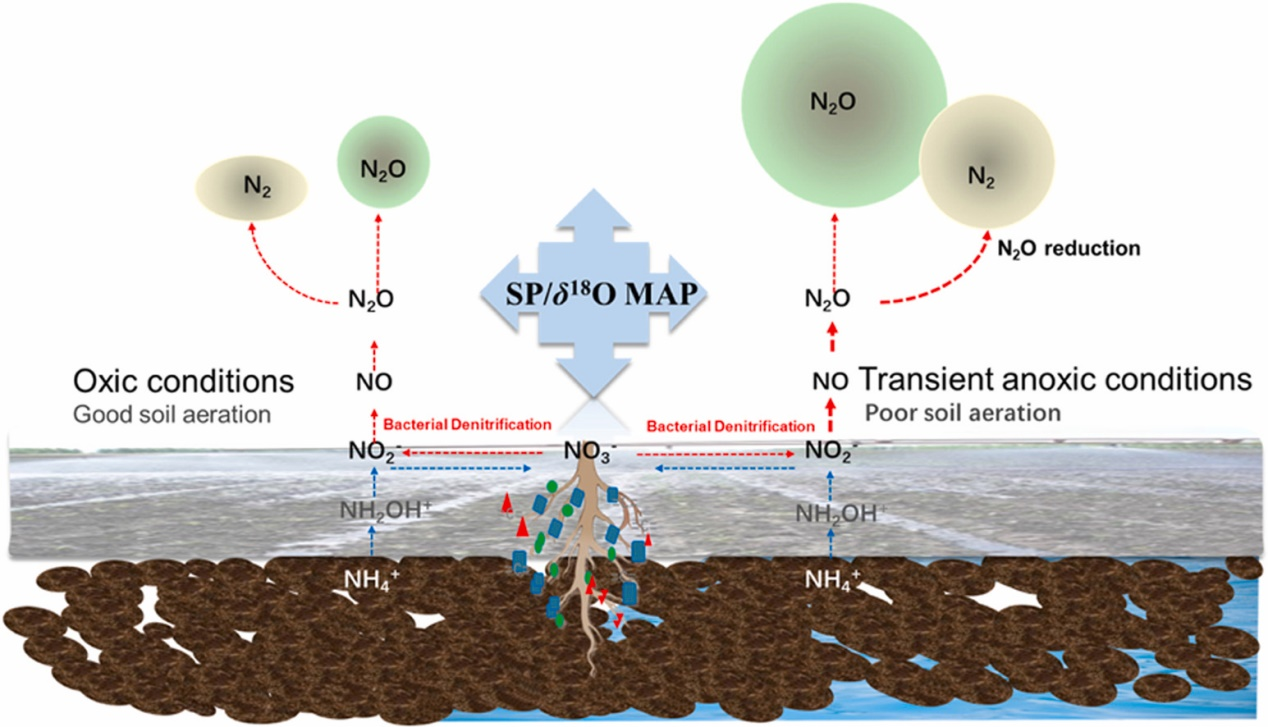Recently, the Biological Water Conservation and Dryland Agriculture Team from the Institute of Environment and Sustainable Development in Agriculture, Chinese Academy of Agricultural Sciences made new progress in the study of mechanisms of nitrous oxide (N2O) emissions from farmlands. The study revealed the mechanism by which transient anoxic conditions stimulated N2O emissions using a dual isotope mapping approach (SP/δ18O MAP). The related research findings have been published in the Soil Biology and Biochemistry .

Study reveals a new mechanism for mitigating N2O emissions
N2O emission peaks can occur within short periods ("hot moments"), from hours to a few days after rainfall or anthropogenic activities such as irrigation and plowing. Such large increases in N2O emission fluxes might be a result of sudden heterogeneous shifts in soil aeration. By conducting a laboratory incubation experiment, the team proved that even in well-aerated soils, transient anoxic conditions could cause surges in the rates of N2O emissions through bacterial denitrification facilitated by organic carbon additions, while diminishing the proportion of N2O reduction. It also found that the rates of N2O emissions were regulated by different carbon sources in soils. The study provides a theoretical basis for further probing into the mechanisms for regulating N2O emission peaks under transient anoxic conditions, and gives new insights into agricultural greenhouse gas reduction.
This study was supported by the Agricultural Science and Technology Innovation Program (ASTIP) of the Chinese Academy of Agricultural Sciences, and the Open Project of State Key Laboratory of Efficient Utilization of Arid and Semi-arid Arable Land in Northern China.
Linkage: https://www.sciencedirect.com/science/article/pii/S0038071724000403

